Yale University: Belle Skinner Collection
Hillhouse Avenue
New Haven, CT
Images
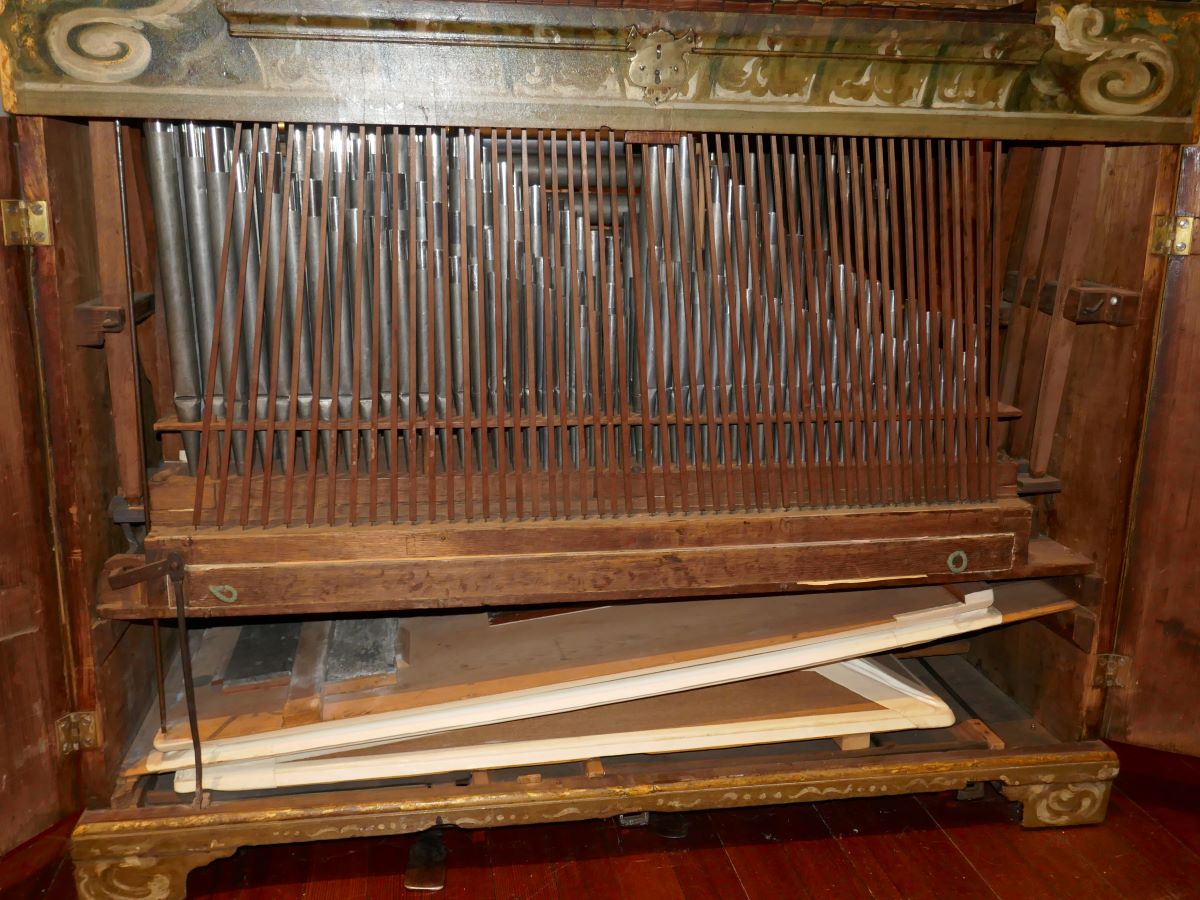 2023-04-17 - Windchest, diagonal feeder and diagonal wedge reservoir (Photograph by Scot Huntington/Scot Huntington)
2023-04-17 - Windchest, diagonal feeder and diagonal wedge reservoir (Photograph by Scot Huntington/Scot Huntington)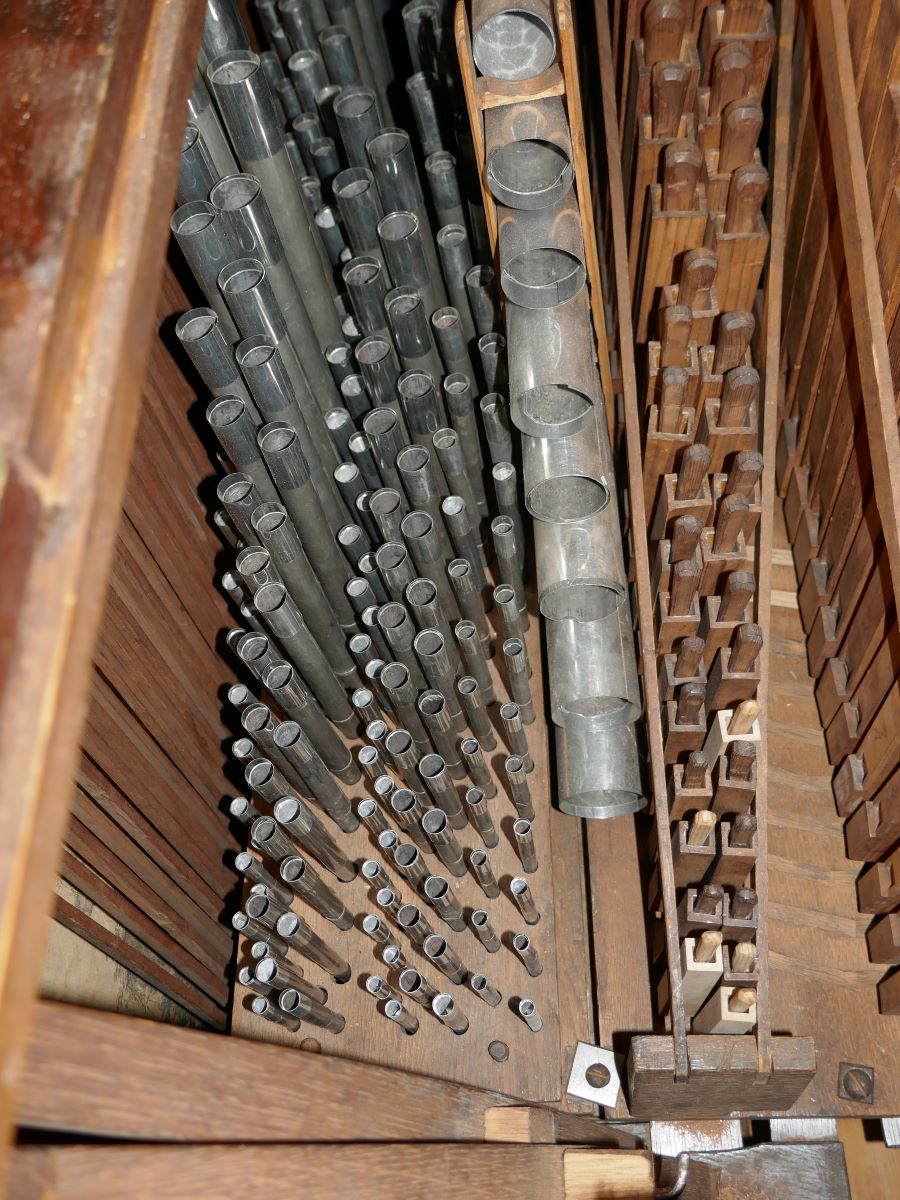 2023-04-17 - Bass view, looking under keyboard: two rank Sesquialtra far left, two rank Cornet next, then 2' Fifteenth (Photograph by Scot Huntington/Scot Huntington)
2023-04-17 - Bass view, looking under keyboard: two rank Sesquialtra far left, two rank Cornet next, then 2' Fifteenth (Photograph by Scot Huntington/Scot Huntington)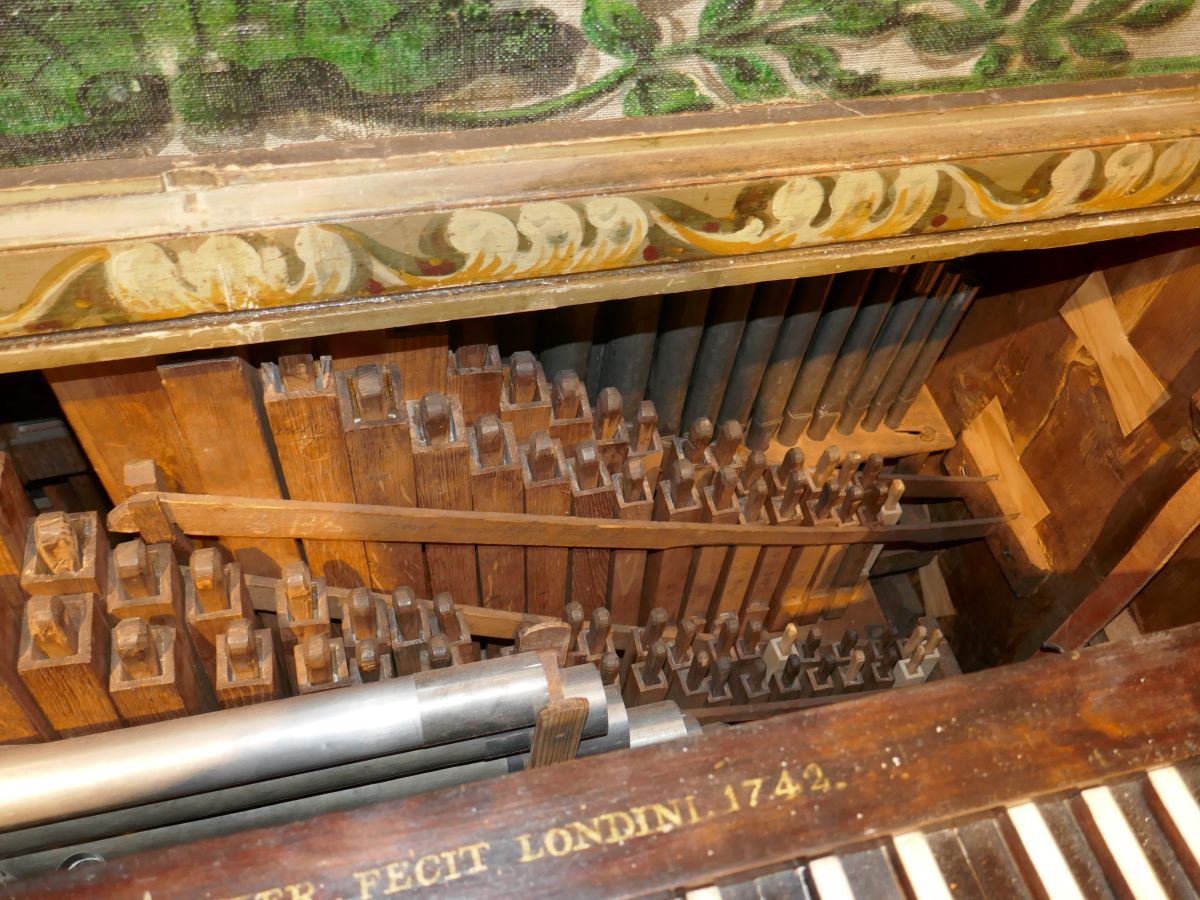 2023-04-17 - Organ interior, treble (Photograph by Scot Huntington/Scot Huntington)
2023-04-17 - Organ interior, treble (Photograph by Scot Huntington/Scot Huntington)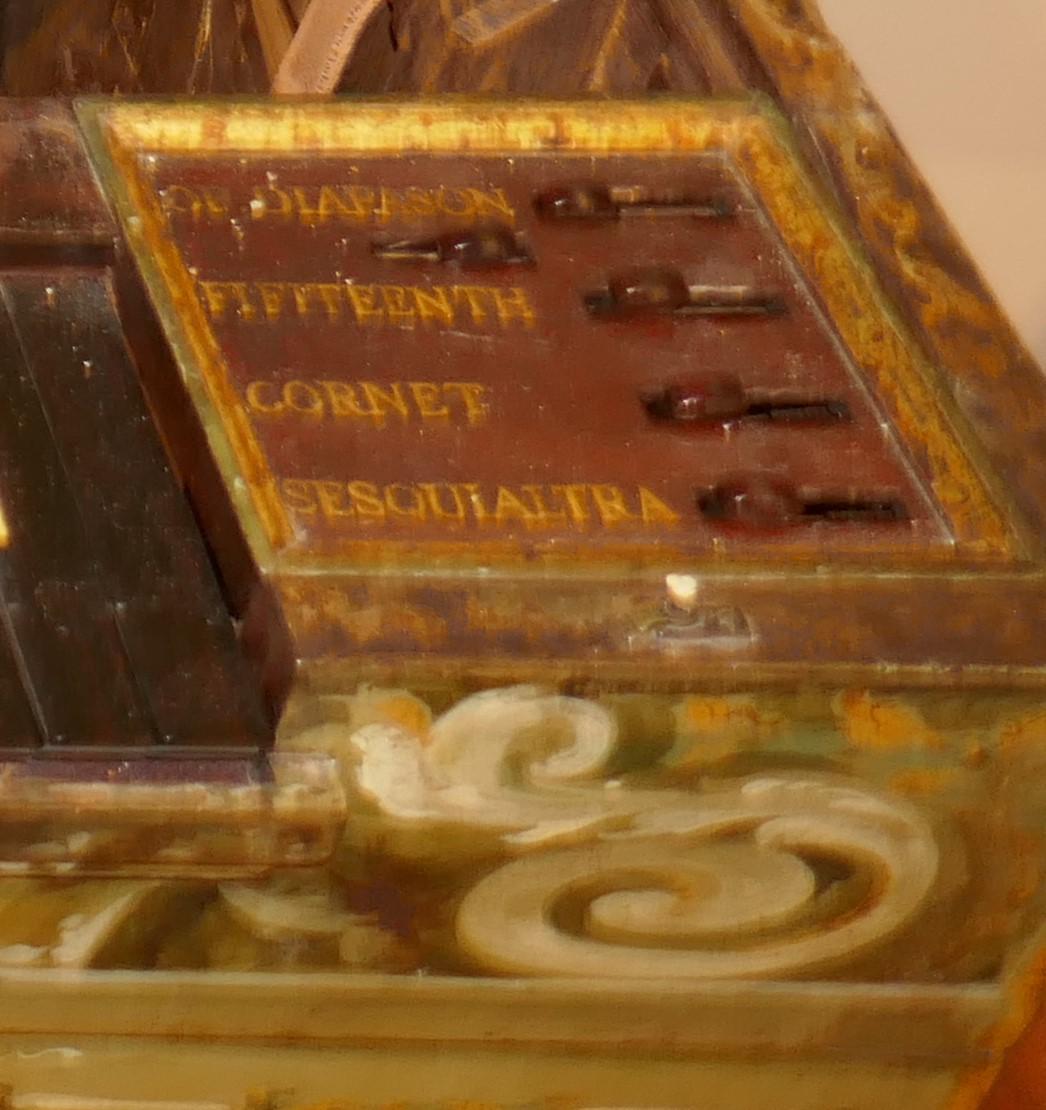 2023-04-17 - Keydesk: treble end stops (Photograph by Scot Huntington/Scot Huntington)
2023-04-17 - Keydesk: treble end stops (Photograph by Scot Huntington/Scot Huntington)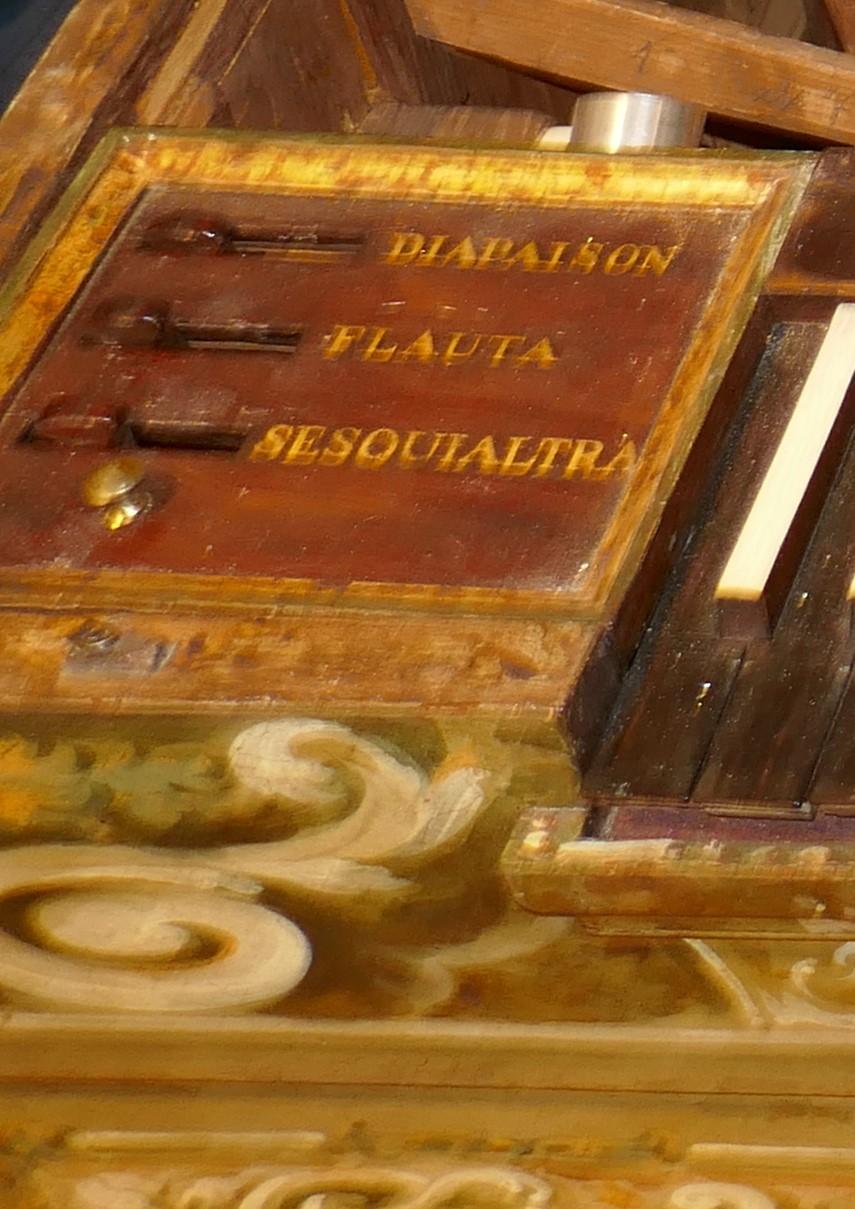 2023-04-17 - Keydesk: bass end stops (Photograph by Scot Huntington/Scot Huntington)
2023-04-17 - Keydesk: bass end stops (Photograph by Scot Huntington/Scot Huntington)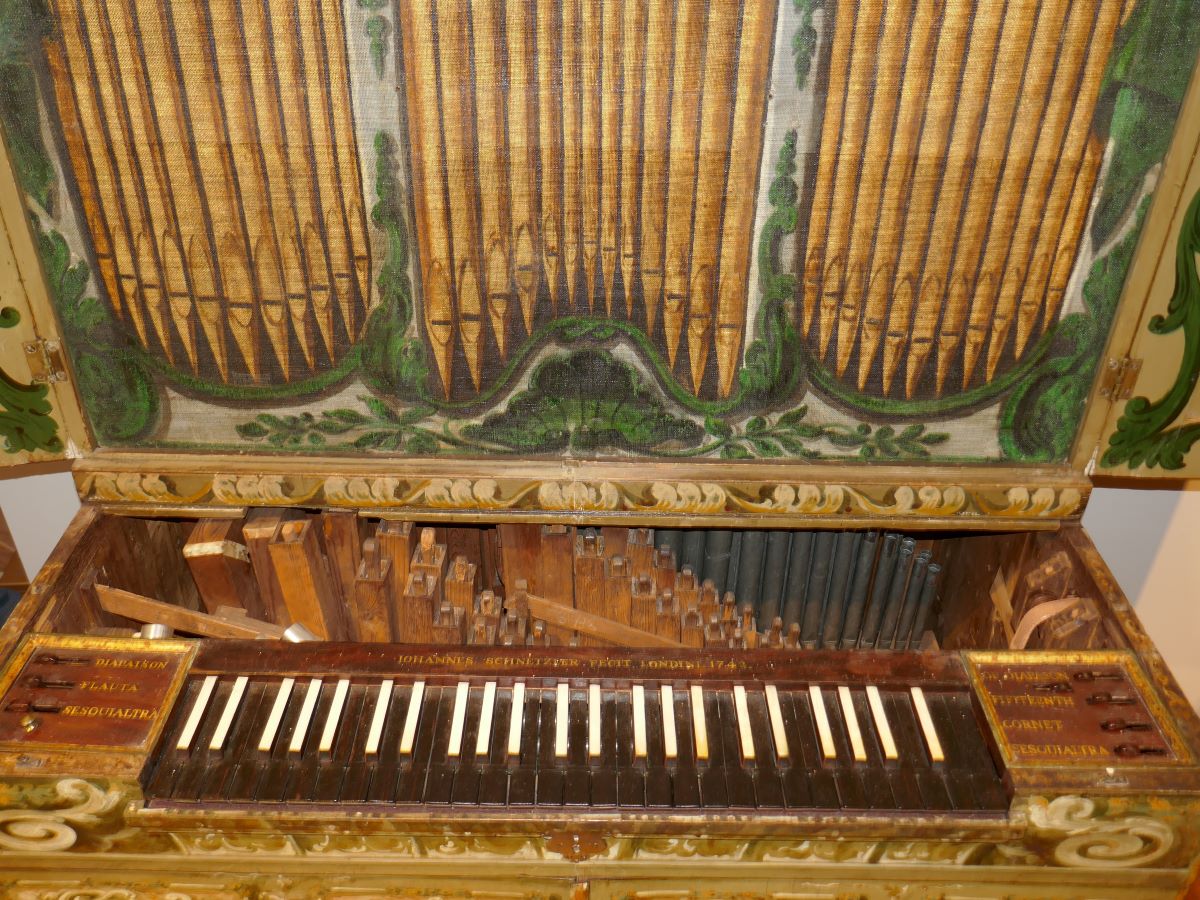 2023-04-17 - Keydesk (Photograph by Scot Huntington/Scot Huntington)
2023-04-17 - Keydesk (Photograph by Scot Huntington/Scot Huntington)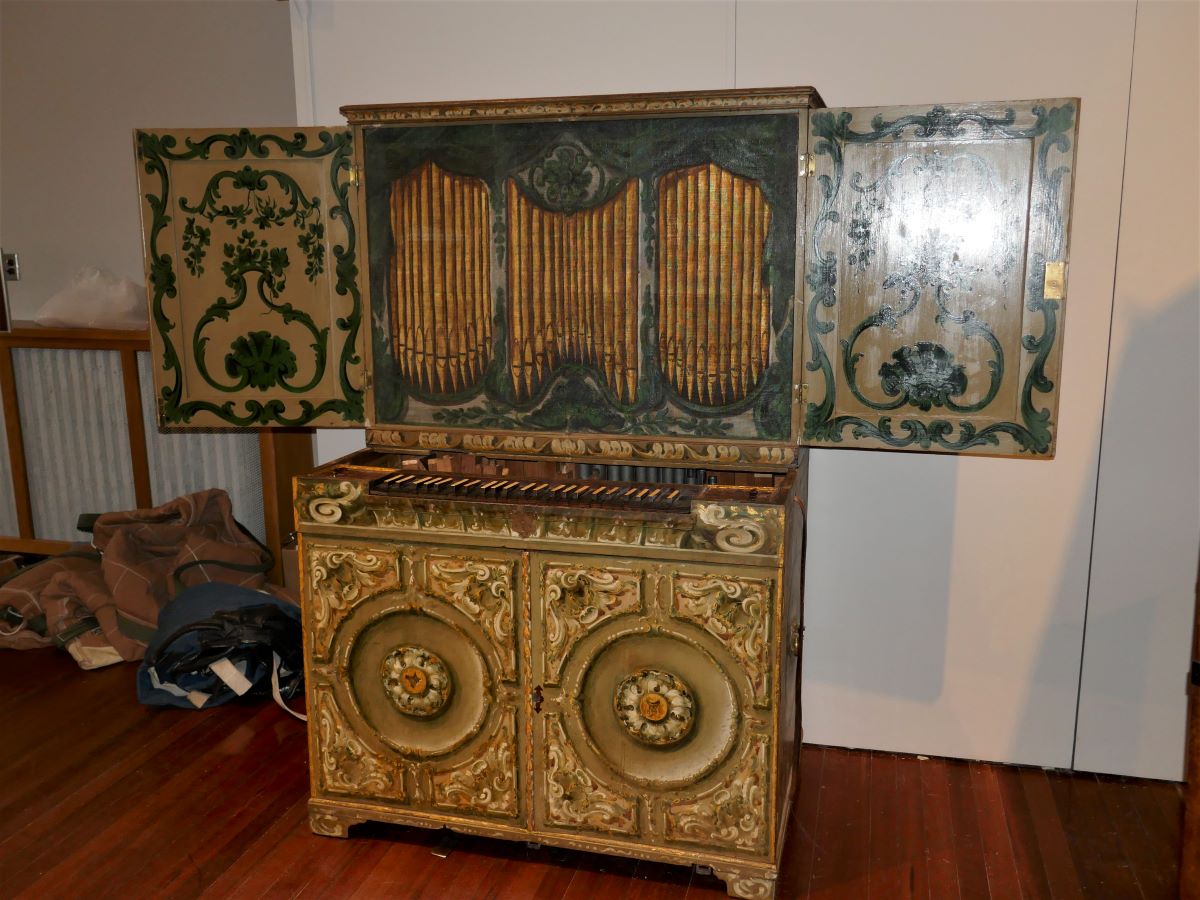 2023-04-17 - Organ case (open), with reconstructed painted facade screen (Photograph by Scot Huntington/Scot Huntington)
2023-04-17 - Organ case (open), with reconstructed painted facade screen (Photograph by Scot Huntington/Scot Huntington)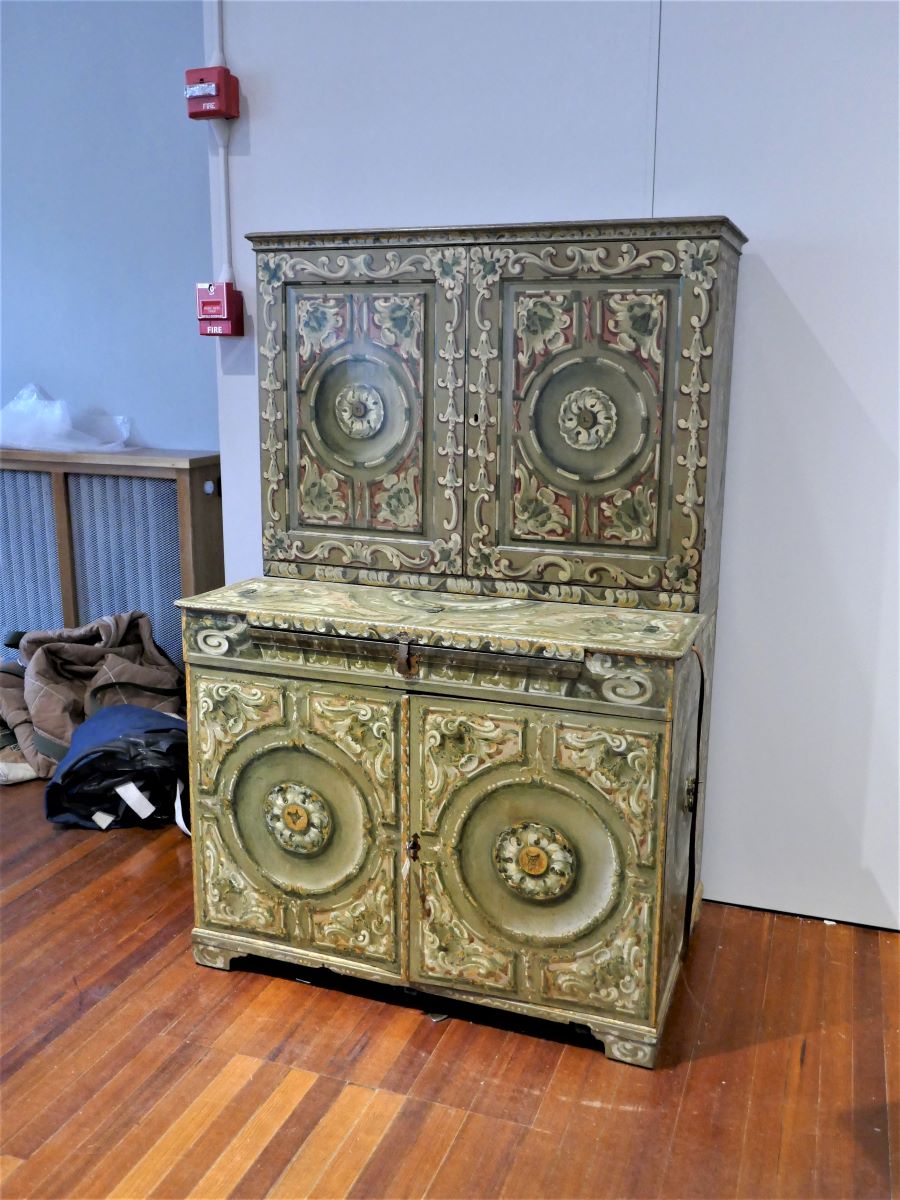 2023-04-17 - Organ case (closed) (Photograph by Scot Huntington/Scot Huntington)
2023-04-17 - Organ case (closed) (Photograph by Scot Huntington/Scot Huntington)
Consoles
Main
- Organ type: Traditional With a Keyboard Cover That Can Be Lifted To Form a Music Rack
- Console position: Keydesk Attached
- 1 manuals
- 8 stops
- 1 divisions
- Key action Type: Mechanical (Details Unknown)
- Stop action Type: Mechanical
- Stop layout Type: Sliding Stop Controls/Levers
- Manual compass: 52 notes
- Expression Type: No Enclosed Divisions
- Combination action: Blind Action
- Has combination trundles
Notes
2004-10-30 - Status Note: There 1997 -Database Manager
2004-10-30 - Restored Noel Mander, 1983. A typical portable organ of the box-organ type, with a very simple box case rather garishly painted. There are no front pipes, but only a fabric covering which has a stylized painting of pipes on it. Stops are controlled by levers on both ends of the keyboard. The organ has a hand pumping mechanism controlled either by a foot lever operated by the player, or by leather straps operated by an assistant. -Database Manager
2016-05-21 - Updated through online information from Giacomo Nicotra. -Database Manager
2023-04-19 - The stunning trompe l'oeil is one of the finest remaining examples of its era as applied to an organ case, and was hidden under layers of dark varnish until being uncovered and restored by Mander in 1983. Mander is of the opinion the organ was originally built as a low-boy secretary organ, later enlarged by Snetzler with the raised rear case section, for the addition of the Open Diapason Treble and a reordering of the Stopt basses without miters for easier tuning access, taking advantage of the raised case section to now stand unmitered. He was also of the opinion the Sesquialtra and Cornet were original treble and bass divisions of one mixture, with the treble continuation of the Sesquialtra added at the same time as the organ's expansion. The organ is unusual in not having a 4' Principal between the Open Diapason and four ranks of mixture, but it subsequently appeared in the treble disposition of the new Sesquialtra.
Noel Mander tried without success to prove this was the instrument used for the Dublin premier of Handel's *Messiah* in 1742, where it is well documented Handel conducted from a chamber organ and played continuo on an organ recently delivered to Dublin. The evidence this was the same organ is only circumstantial, but while the fact can not be conclusively proven, it has not been conclusively discounted either, so it remains a tantilizing 'maybe' with reservations. -Scot Huntington
2023-04-19 - This is perhaps the second-oldest extant Snetzler, ascribed by Barnes and Renshaw in the Snetzler biography as his No. 4. In their biography of Snetzler, they cite a letter from the then-owner of this organ, Sir Thomas Drew, Feb. 1889, who makes the supposition that it was a nearly identical organ built the same year (1742) which was the instrument used for *Messiah* and not his organ. This second organ was at that time in the possession of a third or fourth owner, Rev. R. Johnston, Kilmore (County Armagh), and lost after a move to Denmark 1920. The first four organs Snetzler made after his establishing himself in business in London (the year is in question), were all residential chamber organs of the box organ variety. Organ No. 2 was enlarged with a substantial case, and this organ was enlarged to its present proportions apparently by Snetzler himself, at an unknown later date. While the myth persists in some quarters this is the Dublin organ associated with Handel, the Drew letter is the basis for contemporary doubt. -Scot Huntington
Stoplist
Source: Keydesk April 18, 2023
Yale University
New Haven, Conn.
Nameboard:
JOHANNES SCHNETZLER. FECIT LONDINI. 1742.
Spellings as found.
[Bass] [Treble]
DIAPAISON OP DIAPASON
FLAUTA [unlabeled Flauta]
SESQUIALTRA FIFITEENTH
CORNET
SESQUIALTRA
Specification:
Compass: C-d51,e53 (omits top d#)
All metal pipes with Mander slide tuners, 1983
DIAPAISON: 8', stopt wood- mostly oak, some pine; through compass
OP DIAPASON: 8', treble from middle-c, common metal
FLAUTA: 4', Bass 1-24, stopt wood, mostly oak
[unlabeled]: 4', treble, stopt wood, mostly oak
FIFITEENTH: 2', common metal, through compass
CORNET: treble from middle-c, 2 ranks, common metal, spec TBD
SESQUIALTRA: Bass 1-24, 2 ranks, common metal, spec TBD
SESQUIALTRA: Treble, 2 ranks,common metal, spec TBD
Machine-stop foot pedal: takes upperwork off when activated
Blowing pedal
Blowing strap for an assistant on treble case side
Wind Indicator rod for organist
Other Links
Regrettably, it is not possible to display the information about the sponsor of this pipeorgandatabase entry or if there is a sponsor. Please see About Sponsors on Pipe Organ Database.







